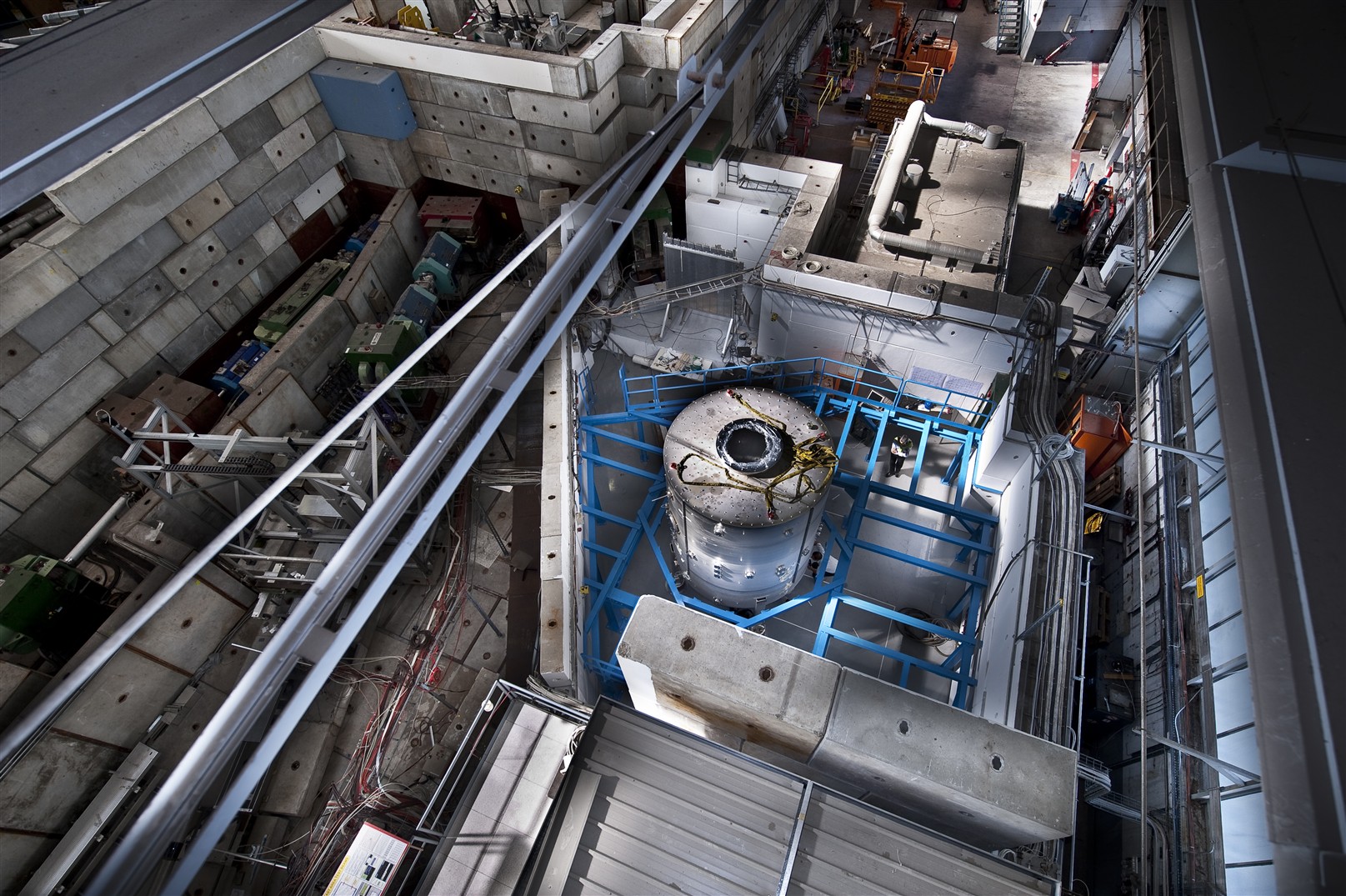Happily CLOUDy
While the LHC experiments are fine-tuning their equipments waiting for ‘glamorous’ beams, CLOUD has finished its assembly phase and is starting taking data using a beam of protons from the 50 year-old Proton Synchrotron (PS). Here is a quick detour around a cutting-edge physics experiment that will shed light on climate-related matters.

Jasper Kirkby photographed inside the CLOUD chamber.
Many experiments in the world are currently investigating the factors that may affect the planet’s climate but CLOUD is the only one that makes use of a particle accelerator. “The proton beam that the PS provides is unique because it allows us to adjust the “cosmic ray” intensity. In this way, we can simulate the difference of particle flux in the atmosphere in going from the ground to the outermost layers of the stratosphere (a factor 100 more intense)”, explains Jasper Kirkby, CLOUD’s spokesperson.
“There are a lot of observations suggesting that particles hitting the atmosphere might affect the production of clouds and, in turn, the planet’s climate”, continues Kirkby. “However, given the complexity of the climate and the many parameters involved, a clear answer doesn’t exist yet”.
The CLOUD detector is optimized for addressing this question like no other experiment so far. “For the first time, we want to do definitive, quantitative measurements of the underlying microphysics”, states Kirkby. “CLOUD has been designed to follow all the processes involved from the birth of the embryonic aerosols, which then grow to a big enough size to become the seeds for cloud droplets. CLOUD will also study the effect of cosmic rays on the cloud droplets and ice particles themselves”.
Inside the CLOUD chamber.
The uniqueness of CLOUD also resides in the fact that the parameters that are likely to produce effects on the cloud formation can be controlled in laboratory. “There is a huge range of different variables that we have to study, from the different chemicals involved to the different temperatures of the gas in the chamber”, says Kirkby. “We will be able to set the temperature in the cloud chamber from -90 °C to +40 °C, which essentially covers the whole of the atmospheric temperatures from the coldest part of the stratosphere to the warmest part of the troposphere”.
Climate change is high up on the agenda of governments and experts worldwide. CLOUD has indeed the ambition to address this question too. “One of our collaborators from Leeds University in the UK, has developed a ‘global model’ of the cloud processes that can affect the climate”, explains Kirkby. “Using the Leeds model, we will evaluate the climatic significance of any results that we find in CLOUD”.
The CLOUD experiment in its final position in the PS East Hall.
The idea of simulating the cosmic rays with a particle beam came up in 1997, the CLOUD experiment was approved in 2006 and is now finally ready to start taking data with the new, carefully designed aerosol chamber. “If everything goes well, and the physics results are important, we could take data for about twelve years”, explains Markku Kulmala, head of the Division of Atmospheric Sciences at the University of Helsinki. “We expect the first results to come fairly quickly, some will already be available in real time as soon as we switch on the equipment. The results of a more quantitative analysis will be available in about one year from now”.
Watch the video interview:
by CERN Bulletin



